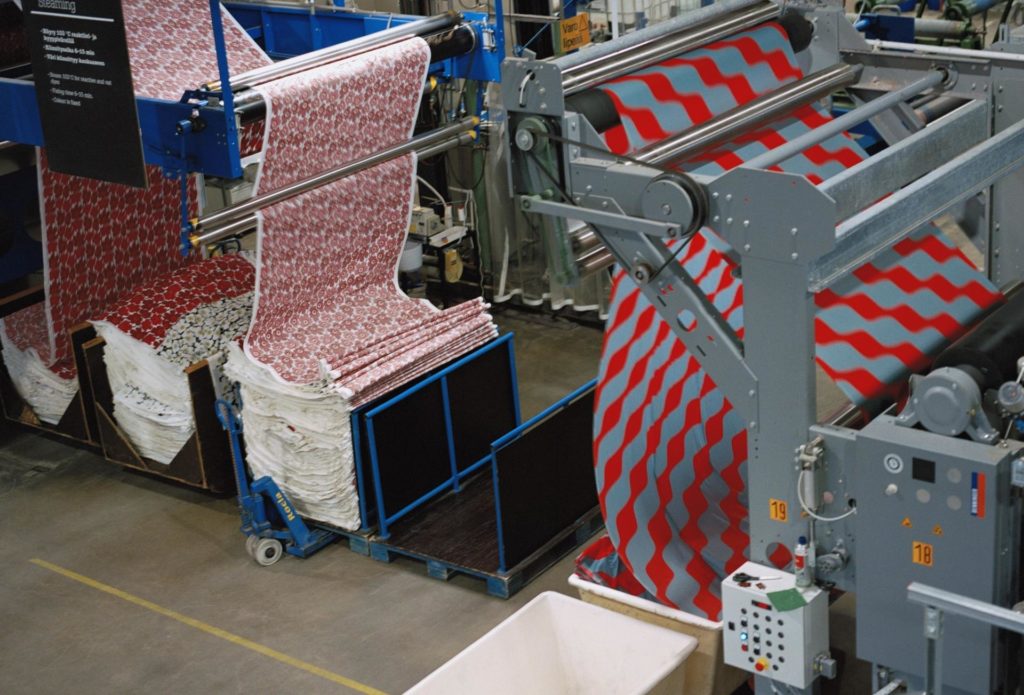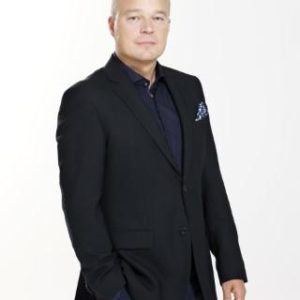
Our ambition is to leave no burden for the coming generations. Since 2010, we have reduced the emissions of our printing factory and headquarters by 78 percent. In 2020, we became carbon neutral for all our own operations, including also our other offices and the stores we operate globally. Our next target is to reduce emissions from our own operations by 40 percent from the 2019 level by the end of 2025.
Purpose
At Marimekko, we want to be at the forefront of continuously developing more sustainable products and practices. We want to leave no burden for the coming generations and believe that, in the future, timeless and sustainable products will be made in balance with the environment, in line with the principles of the circular economy.
We aim to reduce emissions substantially within our entire value chain, starting from raw materials. Our long-term vision is that our operations leave no trace on the environment. As a result of continuous development work and emission offsetting, our own operations are already carbon neutral in 2020.
Results
Since 2010, we have reduced the emissions of our printing factory and headquarters by 78 percent, which equals a reduction of 1,093 tons of carbon dioxide equivalent. In 2019 and 2020, we estimated the total footprint for all our own operations, including also our other offices and the stores we operate globally, and offset the whole remaining carbon footprint.
Implementation
Since 2010, we have reduced the emissions of our printing factory and headquarters by increasing the use of renewable energy and improving energy efficiency, for example. In 2016, we started to use biogas for our printing factory in Helsinki, which alone reduced the emissions by around 700 tons. Through the renovation done in the building during 2018-2020, the electricity use has further been reduced by 31 percent and the use of district heating by 47 percent compared to the year 2016.
During 2019 and 2020 we have conducted studies to estimate in more detail the carbon footprint of our printing factory, offices and stores. These studies have been done with the help of external partners, who have supported us on setting the scope for the footprint and the actual calculations. The footprint covers the most significant scope 1–3 emissions of these operations according to the GHG protocol, including energy production and consumption, the use of materials and equipment, the waste generated as well as eating, business travel and commuting of the personnel in Marimekko locations.
To offset the remaining carbon footprint, we have partnered with myclimate, a non-profit organization based in Switzerland and specializing in voluntary CO2 compensation measures, to support a reforestation project in Uganda. The project promotes sustainable forest management by encouraging local communities to reforest areas and implement sustainable forest management plans that reduce the need to cut down forests valuable to biodiversity. In addition, the project supports the diversification of incomes for the local communities, thus further reducing the pressure on the forests. Protecting the local forests enables increased carbon sequestration as well as conserving biodiversity in the area. In addition to this project, we also offset all emissions from our store and e-commerce deliveries in Finland as well as from e-commerce deliveries elsewhere in Europe.
To continue reducing our impact on climate, we have set new emissions reduction targets for our own operations and for the value chain. By 2025, we aim to
– Reduce the environmental footprint of kg of textile at least 30 percent by 2025 (incl. at least 20 percent reduction of emissions and 50 percent reduction of water usage; measured in Higg Material Sustainability Index)
– Engage suppliers to improve their environmental performance (e.g. renewable energy, new technologies)
– Maintain our own operations carbon neutral as of 2020 via reduction & offsetting
– Further reduce emissions of our own operations by 40 percent (compared to 2019)
– Reduce emissions of logistics by 50 percent in relation to volumes (compared to 2018)
Read more about myclimate and the project in Uganda: https://www.myclimate.org/information/carbon-offset-projects/detail-carbon-offset-projects/uganda-forestry-7181/
Read more about our sustainability ambition: https://company.marimekko.com/en/sustainability/sustainability-strategy/
Marimekko follows the image of Finland, the mother country: clean and green, Co2 free. It is a great chance for all the companies in textile business to follow the example of Marimekko to start operating in a cleaner way, with respect to the environment of the places where they act.
This Planet Act illustrates how dedicated emission minimization efforts covering the companys own operations produce substantial year-on-year reductions. In addition, offsetting is used only as a last option for remaining emissions. This approach is scalable and can be utilized by organizations of different sizes and requires the ability to reliably account emission sources, types and amounts.


Responses